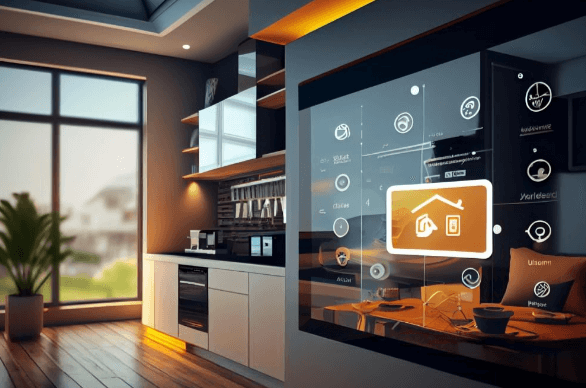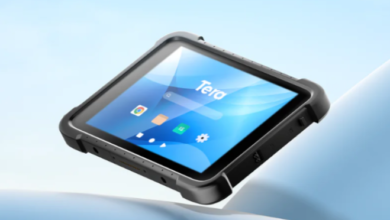What technological innovations are driving the future of smart homes and connected devices?

Introduction
The advent of smart home technology has revolutionized the way we interact with our living spaces. From intelligent lighting systems to automated security features, the integration of connected devices into our homes is enhancing convenience, security, and energy efficiency. This article delves into the various technological innovations that are propelling the future of smart homes and connected devices, providing a comprehensive overview of current trends and future prospects.
Smart Home Automation
Smart home automation refers to the ability to control various home systems such as lighting, heating, and security from a central hub or mobile device. This technology is becoming increasingly sophisticated, allowing for seamless integration of various devices and systems.
Internet of Things (IoT)
The Internet of Things (IoT) is the backbone of smart home technology, enabling devices to communicate with each other and be controlled remotely. IoT allows for the collection and analysis of data from various devices, providing insights into usage patterns and enhancing overall efficiency.
Voice-Activated Assistants
Voice-activated assistants like Amazon Alexa, Google Assistant, and Apple’s Siri are central to the smart home ecosystem. These devices allow users to control their smart home devices using simple voice commands, making the user experience more intuitive and accessible.
Artificial Intelligence and Machine Learning
Artificial intelligence (AI) and machine learning (ML) are playing crucial roles in the evolution of smart homes. These technologies enable devices to learn from user behavior, predict needs, and automate responses, thus creating a more personalized and efficient living environment.
Smart Lighting Systems
Smart lighting systems can be controlled remotely, programmed to follow specific schedules, and even adjust according to natural light levels. Innovations in this area include the development of energy-efficient LED bulbs and systems that integrate with voice-activated assistants.
Advanced Security Solutions
Smart home security systems are becoming more sophisticated, offering features such as facial recognition, real-time alerts, and remote monitoring. These systems enhance home security by providing detailed insights and instant notifications about any suspicious activities.
Energy Management Solutions
Energy management solutions in smart homes aim to reduce energy consumption and costs. Innovations include smart thermostats, energy-efficient appliances, and systems that optimize energy use based on real-time data and user habits.
Smart Kitchen Appliances
Smart kitchen appliances, such as refrigerators that can monitor food inventory and ovens that can be controlled remotely, are making kitchens more efficient and convenient. These appliances often integrate with other smart home systems for a seamless experience.
Health and Wellness Devices
Health and wellness devices, including smart beds, fitness trackers, and air quality monitors, are increasingly being integrated into smart homes. These devices help users maintain a healthy lifestyle by providing real-time data and personalized recommendations.
Home Entertainment Systems
Smart home entertainment systems include smart TVs, sound systems, and gaming consoles that can be controlled remotely and integrated with other smart devices. These systems offer enhanced user experiences through features like voice control and personalized content recommendations.
Connected Home Ecosystems
Connected home ecosystems refer to the integration of various smart home devices into a unified system that can be controlled from a single interface. This integration enhances convenience and efficiency, allowing for seamless interaction between different devices.
5G Connectivity
The rollout of 5G technology is set to revolutionize smart homes by providing faster and more reliable internet connectivity. This will enable real-time data transmission and more responsive smart home systems.
Smart Home Hubs
Smart home hubs serve as the central control point for various smart home devices. These hubs can integrate with multiple devices, offering a unified interface for controlling different systems and enhancing overall user experience.
Integration with Wearable Technology
Integration with wearable technology, such as smartwatches and fitness trackers, allows for more personalized and responsive smart home systems. These devices can provide real-time data that can be used to automate home systems based on user activity and preferences.
For instance, when a smartwatch detects the user is waking up, it can generate a QR code to streamline morning routines, such as adjusting the thermostat or starting the coffee maker.
Enhanced User Interfaces
User interfaces for smart home systems are becoming more intuitive and user-friendly. Innovations include touchless controls, augmented reality (AR) interfaces, and advanced mobile apps that offer enhanced functionality and ease of use.
Smart Mirrors
Smart mirrors equipped with touchscreens, cameras, and internet connectivity are transforming bathrooms and bedrooms. These devices can display weather updates, news, and even health metrics, offering a futuristic and functional addition to smart homes.
Robotics in Smart Homes
Robotics technology is finding its way into smart homes, with devices such as robotic vacuum cleaners, lawn mowers, and personal assistants becoming increasingly popular. These robots offer convenience and efficiency, performing routine tasks autonomously.
Smart HVAC Systems
Smart heating, ventilation, and air conditioning (HVAC) systems are designed to optimize energy use and maintain ideal indoor conditions. These systems can learn user preferences and adjust settings automatically, contributing to a comfortable and energy-efficient home environment.
Blockchain Technology
Blockchain technology is being explored for use in smart homes to enhance security and data privacy. This technology can provide secure and transparent data transactions, ensuring that user information is protected.
Biometric Authentication
Biometric authentication, such as fingerprint and facial recognition, is being integrated into smart home systems to enhance security. These technologies provide an additional layer of protection by ensuring that only authorized individuals can access certain features or areas.
Augmented Reality (AR)
Augmented reality (AR) is being used in smart home systems to provide interactive and immersive experiences. AR can be used for tasks such as interior design, allowing users to visualize changes in real-time before making any physical alterations.
Smart Bathrooms
Smart bathroom technology includes features such as smart showers, toilets, and mirrors that can be controlled remotely and offer personalized settings. These innovations enhance convenience and contribute to a luxurious bathroom experience.
Smart Windows and Blinds
Smart windows and blinds can be controlled remotely, programmed to adjust based on the time of day, and even react to weather conditions. These systems contribute to energy efficiency and enhance comfort within the home.
Smart Home Appliances Integration
Integration of various smart home appliances into a cohesive system allows for enhanced functionality and convenience. Appliances can communicate with each other and be controlled from a central hub, offering a seamless user experience.



